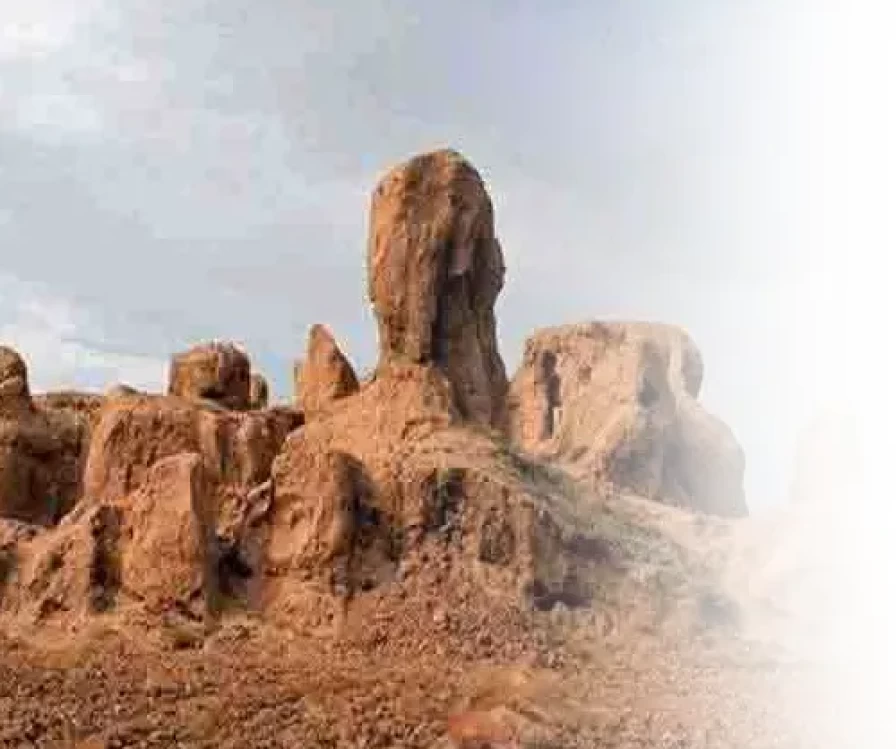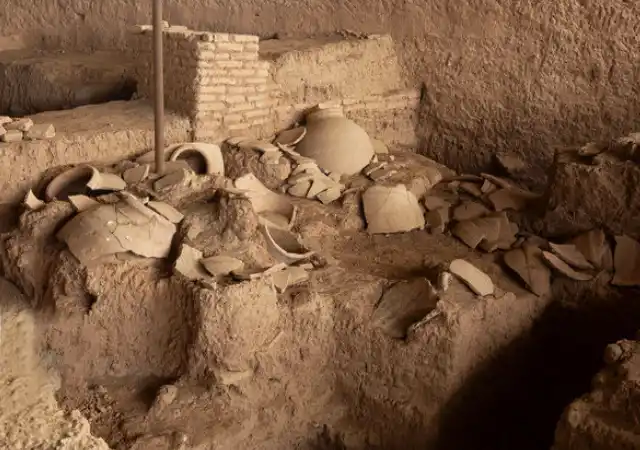
Discovering the Enchanting Gardens of Shadiakh in Nishabur , Iran for Travellers





Shadiyakh
Shadiakh (Shadiyakh), also known as Shadi Kakh or Shadi Yakh, was one of the magnificent districts of the ancient city of Nishapur. It was settled in the 3rd century AH (9th-10th century CE) and was tragically destroyed by a massive earthquake in 1281 AH (1864 CE). This district derived its name from the magnificent Palace (Kakh) built there, which became a hub for artists, writers, and elites of Nishapur. Rulers from the Tahireh and Seljuk dynasties also resided here. Although fully destroyed by the earthquake, Shadiakh (shadiakh) is now considered one of Iran's significant archaeological and tourism sites. The area and its remnants are registered in the National Historical Monuments of Iran.
The name Shadiakh is composed of two words: "Shadi" (joy/happiness) and "Akh" (a suffix often suggesting a place), translating to a place that "brings joy"** or is "joy-creating." The area was also referred to as Shad Kakh (Joyful Palace), Shad Jahan, and Shad Mehr.
In most surviving works from after the 3rd century AH, whenever Nishapur is mentioned, the name Shadiakh inevitably comes up. Al-Hakim Nishapuri, in his "History of Nishapur," wrote: "Shadiakh was one of the most famous districts of Nishapur and the residence of Abdullah ibn Tahir."
Although sometimes mistakenly attributed to Ghazan Khan, the palace was founded by Abdullah ibn Tahir. The reason behind its construction is recounted in a famous tale: The story goes that Abdullah ibn Tahir had ordered military, administrative, and governmental personnel, who lacked lodging, to reside in citizens' homes, a policy that naturally led to many problems. One night, a soldier entered the house of a newlywed couple and seemingly coveted the bride. He ordered the husband to leave and fetch water and fodder for his horse, intending to commit a heinous act in his absence. The quick-witted husband, however, instructed his wife to perform the chore instead. The unfortunate bride, knowing nothing of horses, reluctantly took the reins and led the horse out into the dark city.
By chance, the governor (Hakim, though referring to a high official like Abdullah ibn Tahir in the story context) was inspecting the area and saw the woman dragging a horse. Unaware of his identity, the woman continued on her way. The governor inquired if she was married and why she was alone outside so late at night. In her desperation, the woman cried out to the official, lamenting: "May God curse the governor who decreed that soldiers should take up residence in people's homes! The soldier cast an evil eye on me, and my husband was forced to send me out to feed the horse, a task I know nothing about, and I am terrified."
The ruler was instantly enraged. He commanded his courtiers and soldiers to start building residences in that district. Slowly, the neighborhood took shape. A palace, named Shadiakh, was eventually built at the center of this military settlement. It stood firm for a long time, surviving for decades until a devastating earthquake struck the city, utterly destroying it and reducing it to a mound of earth forever. The history of Shadiakh is deeply intertwined with the cultural and political significance of Nishapur, a major centre along the Silk Road. Flourishing particularly during the Ilkhanate period (13th-14th centuries), Shadiakh served as a royal garden and pleasure palace. Historical texts describe it as a place of immense beauty, adorned with lush gardens, intricate waterways, and impressive architecture, a testament to the refined tastes of the era. Understanding the Shadiakh history provides a crucial backdrop for appreciating its present-day significance.
Archaeological excavations, which began in the year 1379 Solar Hijri (2000 CE) at this site, uncovered several architectural remains from that era. These include the Public Hall (Talar-e Am), the Inner Quarters (Andaruni), and specialized workshops for winemaking, blacksmithing, pottery, and glassmaking. In addition to the structures, the discoveries included several skeletons trapped under the earthquake rubble, as well as cultural artifacts such as pottery and glass vessels, and exquisite stucco work. A portion of the archaeological remains and photographs of the discovered artifacts are currently displayed in the Shadiakh Museum, which is located near the site. Given the proximity of Shadiakh to the holy city of Mashhad, which allows for a one-day or even a few-hour visit, it is highly recommended that if you are planning to visit Mashhad, you should allocate a few hours to travel to Nishapur and explore the Shadiakh site and its beautiful museum.
While the precise original extent of the gardens may be debated, the historical site of Shadiakh is located within or near the modern city of Nishapur in the Razavi Khorasan province of Iran. For travellers including Nishapur in their itinerary, accessing the area of Shadiakh is generally straightforward. Nishapur is well-connected by road and rail to major Iranian cities like Mashhad. While a specific Shadiyakh map detailing the historical layout might not be readily available in a modern cartographic sense, local guides and historical resources in Nishapur can help pinpoint the areas where the palace and gardens once stood.
Although time has taken its toll, the historical descriptions of Shadiakh highlight its unique features. Imagine terraced gardens descending towards intricate pools and fountains, with elegant pavilions offering respite and views. The integration of nature and architecture was a hallmark of Persian garden design, and Shadiakh was likely a prime example of this art form in Shadiakh Nishapur . While we may not have extensive Shadiyakh photos of its original state, historical illustrations and descriptions offer a glimpse into its past splendour.
While the grand palaces and gardens of Shadiakh may no longer stand in their entirety, visiting the historical area of Shadiakh Nishapur allows for a connection to its past. Exploring archaeological sites or museums in Nishapur that house artifacts from the period can offer tangible links to the era of Shadiakh . Imagine the stories these remnants could tell of the life and culture that once thrived within those gardens. Visualizing the past through historical accounts and any available Shadiyakh photos helps bring the history to life.
When planning your visit to the historical area of Shadiakh Nishaboor , it is advisable to connect with local guides or historians in Nishapur. They can provide valuable context, point out relevant historical markers, and share insights into the area's past. While specific opening hours or entrance fees for the long-vanished gardens are not applicable, exploring the historical sites in Nishapur associated with that era can be incorporated into your travel plans, perhaps in the late autumn of 2025 for pleasant weather.
As Sanapersian tour and travel service providers , Iran travel agency , we are dedicated to curating authentic and enriching experiences for travellers in Iran. While the physical remnants of Shadiakh may be limited, the historical significance and the opportunity to connect with a fascinating period of Persian history make it a compelling destination for those seeking a deeper understanding of Iran's cultural heritage. Let us guide you in discovering the echoes of grandeur that still resonate in the historical landscape of Nishapur.
Contact Us
+989054577261